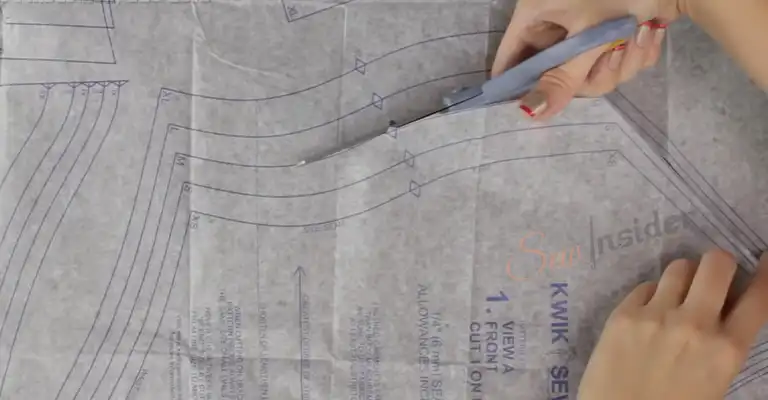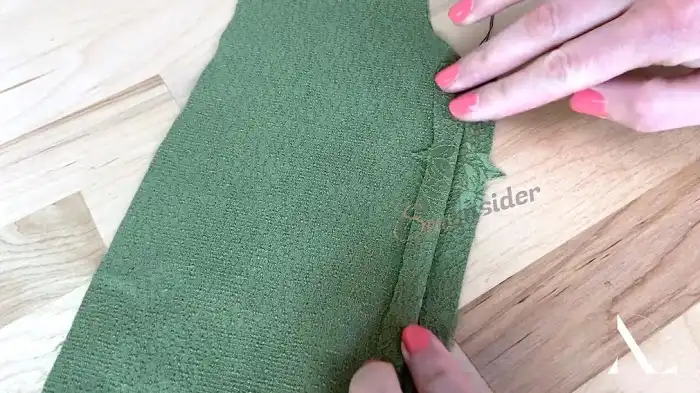Though most sewing pattern comes with seam allowance, some exception still exists. Simplicity patterns include seam allowance. This seam allowance is not used to beautify your garment only.
If your sewing pattern does not provide seam allowances, it shrinks the garment. In this situation, you need to add seam allowances on your own. I will let you know the nitty-gritty of seam allowances through this article.

Can Seam Allowances Be Added to Simplicity Patterns
Yes, seam allowances can be added to simple patterns.
Simplicity patterns are pre-printed paper templates used for sewing clothing and other textile items. These patterns do not include seam allowances, which are the extra fabric that is added along the edges of the pattern pieces to allow for sewing and finishing.
If you are using a simplicity pattern, you can add the desired seam allowance yourself by measuring and marking the appropriate amount of extra fabric around the edges of each pattern piece. This allows you to customize the pattern to suit your specific needs and sewing preferences.
Adding seam allowances to simplicity patterns requires careful attention to detail and a good understanding of garment construction, but it is a common practice for experienced sewers.
What Is the Typical Seam Allowance in Simplicity Patterns
The typical seam allowance in simplicity patterns is not specified. This is because simplicity patterns are designed to be used by a wide range of sewers, with different preferences and skill levels.
Some sewers prefer to use a standard seam allowance of 5/8 inch, while others prefer a different measurement. The lack of a specified seam allowance in simplicity patterns allows the user to choose their preferred measurement and customize the pattern accordingly.
When adding a seam allowance to a simplicity pattern, it is important to use a consistent measurement around all edges and to mark the seam allowance clearly on the fabric before cutting. This helps to ensure accuracy and ease of construction.
Do Simplicity Patterns Come With Instructions on Adding Seam Allowances
No, simplicity patterns do not typically come with instructions on adding seam allowances. Simplicity patterns are basic templates for sewing garment pieces and are intended to be used by experienced sewers who are familiar with garment construction and the process of adding seam allowances.
The lack of instructions on adding seam allowances is intended to allow the sewer to choose their preferred seam allowance measurement and add it themselves. This flexibility can be helpful for those who have specific fitting needs or who prefer to use a different seam allowance measurement than is typical.
However, for those who are new to sewing or unfamiliar with adding seam allowances, it may be helpful to seek out tutorials or additional resources to guide the process.
How Does the Lack of Seam Allowance in Simplicity Patterns Affect Garment Construction
The lack of seam allowance in simplicity patterns can affect garment construction in a few ways. Firstly, without a specified seam allowance, the sewer must determine the appropriate amount of seam allowance to add to each pattern piece. This can be time-consuming and may result in inaccuracies if the sewer is not experienced in determining appropriate seam allowances.
Additionally, without a specified seam allowance, it can be difficult to ensure that all pieces of the garment will fit together properly when sewn, as the exact measurement of each piece may vary. This can result in difficulty achieving a smooth, even finish along the seams.
Another consideration is that without a specified seam allowance, it can be challenging to account for variations in personal sewing style or fabric type. For example, a sewer that typically uses a smaller seam allowance may need to adjust its usual seam allowance measurement when working with a particularly delicate or stretchy fabric.
The lack of a specified seam allowance in simplicity patterns can make it more difficult to anticipate and account for these types of considerations. It can result in a less streamlined and more time-consuming garment construction process and may require the sewer to have a strong understanding of garment construction and a flexible approach to seam allowances.
Are There Any Guidelines for Adjusting Simplicity Patterns to Include Seam Allowances
Yes, there are guidelines for adjusting simplicity patterns to include seam allowances. The following steps can be used as a general guide:
- Determine the desired seam allowance
Choose a consistent seam allowance measurement that works for the fabric and garment type. A common seam allowance measurement is 5/8 inch, but other measurements may be used depending on personal preference or the requirements of the specific fabric or garment.
- Mark the seam allowance on the pattern
Use a ruler and a pencil or fabric marker to add the desired seam allowance measurement to each edge of the pattern piece. Make sure to add the seam allowance consistently to all pieces of the pattern.
- Cut out the adjusted pattern
Cut along the marked lines to create the adjusted pattern pieces that include the seam allowance.
- Test fit the adjusted pattern
Before cutting into the fabric, sew a muslin or sample garment from the adjusted pattern to make sure that the seam allowances are appropriate and that the garment fits properly.
- Adjust as necessary
If necessary, make any necessary adjustments to the seam allowances before cutting into the final fabric.
It is important to note that these are general guidelines and that the exact steps for adjusting simplicity patterns to include seam allowances may vary depending on the specific pattern and the sewer’s personal preferences. In addition, it may be helpful to seek out tutorials or resources that provide more in-depth guidance on this process.
Is the Seam Allowance Included in the Pattern
Seam allowance is essential for sewing a garment. The seam allowances can be 1 to 1.5 cm at the edges that are added to the pieces to get the correct size while sewing the pieces together. Depending on the sewing pattern, they may or may not include in the patterns.
When you finish sewing, most seam allowances are inside the garment. Yet, sometimes they are visible as they are used as decorative elements. But whatever you want to sew, you cannot stitch them without a seam allowance.
Sewing patterns inform you whether seam allowances are included or not
If seam allowance is included, you don’t have to worry much. You can use the pattern the way you cut the fabric. Keep in mind that seam allowances are not shown on the pattern. But they are included in what is drawn.
On the other hand, when seam allowances are not included, you have to add them at the edges before sewing. Otherwise, you do not get the accurate size of your garment. You have to trace the pattern pieces on separate paper and add them yourself. So, I suggest you not buy those patterns, that are not included, in seam allowances.

Which Pattern Should Not Have Seam Allowance
Most of the pattern edges include seam allowance. But some exceptions exist. Two types of edges do not require seam allowance. The first one is cut on fold edges. The other one is fabric edges that do not require seam allowance for subtle finishing.
As the seamline on this specific area is missing, these edges can be easily recognized. On the contrary, you can identify these specific edges by adding additional information along the edge. Similarly, Cut on fold patterns is also recognized by the notation “Cut On Fold” or symbols denoting a cut-on fold symbol.
How Do You Find the Seam Allowance on a Pattern
It is important to identify both the location and length of the seam allowance on a pattern to sew the garments perfectly. Some commercial sewing patterns do not provide pre-marked seamlines with seam allowances. So, it is quite difficult to identify the seam areas for beginners. When seamlines are physically marked along the edges of each pattern piece, it is helpful for both beginners and professionals.

When the seamline is marked, you find a solid or dotted line at the edges. That is considered a stitch line. And you have to sew along this line to get an accurate size. But some commercial pattern pieces do not depict the seamline directly. In this regard, the seam allowance length for each edge is provided in the form of a given measurement. And you have to imply this measurement while cutting your fabric.
There is another way to note the seam allowance on a sewing pattern without using a physical line. Sometimes you may find only notches along each corner of the pattern piece. These notches indicate the location of each seamline. And transfer the notches onto the fabric when you cut down the pattern pieces. When you place it together with the fabric pieces for sewing, the seam allowance notches are overlapped and aligned with the sewing machine needle. And then, the edges of the fabric align themselves to the appropriate seam allowance guide on the sewing machine. That helps you from the disturbance of remembering exact seam allowance measurements.
But I would suggest, if you are not a professional, draw a physical line along each edge using a ruler. Otherwise, you may not match and sew the fabric pieces accordingly.

FAQs (Frequently Asked Questions)
What is the standard seam allowance?
There is no universally correct seam allowance. Depending on your project, the seam allowance varies. For example, knit fabric patterns have smaller seam allowances, while woven fabric projects require more room. But, 5/8 inches is considered a standard seam allowance for regular projects.
Why do we put seam allowance on the basic pattern?
The seam allowance provides extra room around the stitching lines and the raw edges. That informs you where you should have started sewing.
Final Thoughts
Whether sewing patterns include seam allowances or not, they are essential for sewing a garment. Yet, simple patterns include seam allowances. But if you are going to buy another sewing pattern, make sure that it comes with a seam allowance. Otherwise, you need to add seam them on your own.
Leave a Reply